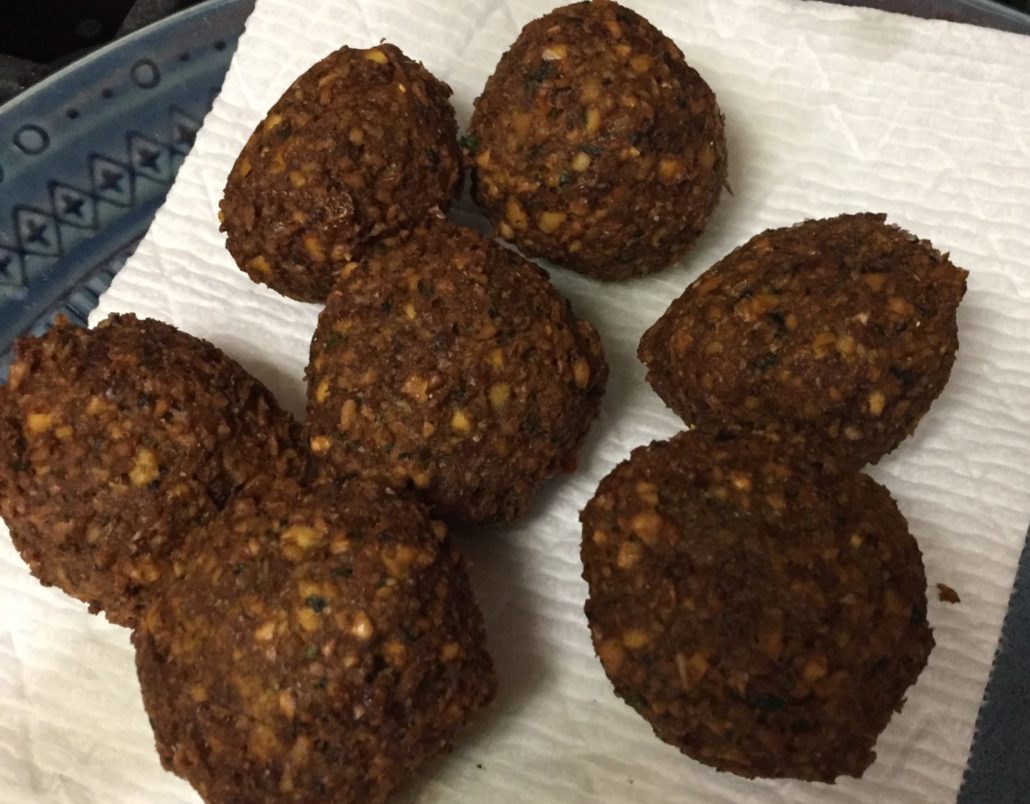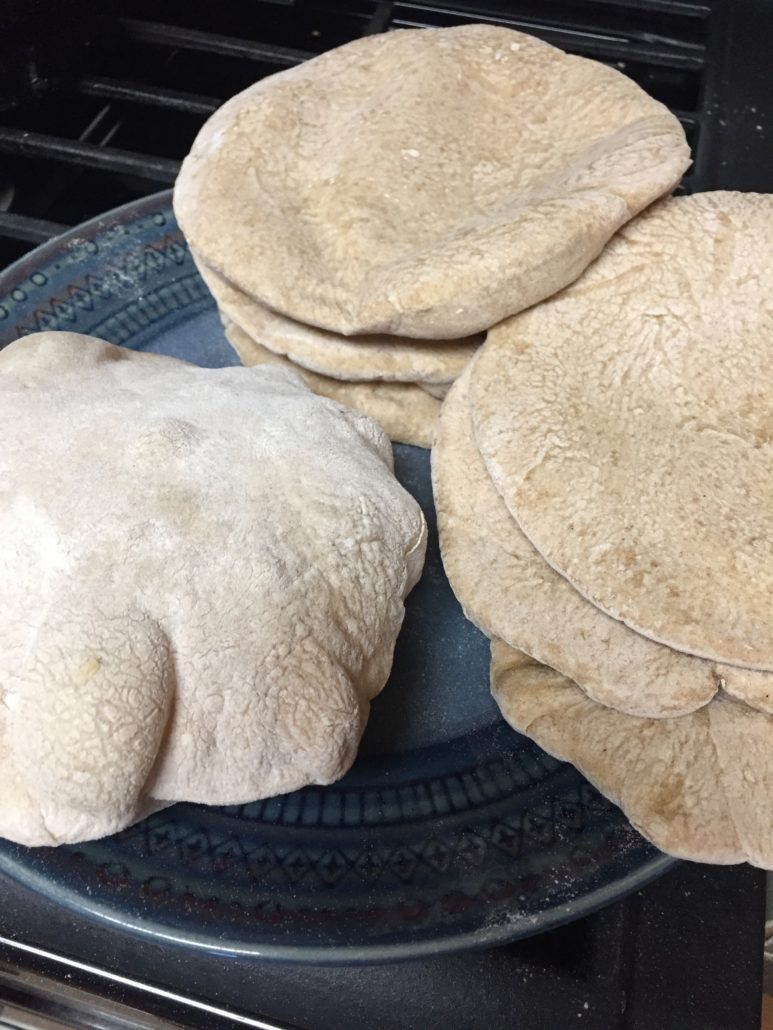I’m not sure when I first had falafel – probably sometime during or after college. It’s not something that was easy to come by in Kansas, where I grew up, and I don’t recall seeing it very frequently in outstate Minnesota either. Whenever I first tried it, I enjoyed it. I’ve made it a few times at home and after trying several recipes, and some spectacular failures, I think I have the basic process figured out. The biggest key is that you cannot use canned chickpeas to make this dish – they are simply too wet to work with, and you’ll wind up adding a ton of flour to get the falafel to stick together, and then you’ll have a pasty, sticky mess.
Pita bread also poses a bit of a challenge – mostly in getting it to puff up into a nice pocket. Everybody seems to have an opinion on the “right” way to do this, and most of the methods I’ve tried have had pretty variable success.

Falafel Ingredients
- 1 1/4 cups dried chickpeas, rinsed
- Handful of cilantro (or parsley if you don’t like cilantro)
- Small onion
- 1 Tbsp lemon juice
- 1 Tbsp ground cumin
- 1 tsp ground coriander
- 1 or 2 cloves of garlic, or 1 tsp garlic powder
- 1 tsp salt
- 1/2 tsp ground black pepper
- 1/2 tsp baking soda
- Hot sauce or cayenne pepper to taste
Procedure
Soak the chickpeas in a large bowl of water (use plenty of water, the chickpeas will absorb quite a bit) for at least 12 hours, preferably 24. Add more water if necessary.
Drain the chickpeas and add them with all ingredients to a food processor. This is a recipe where I haven’t found any tool that works instead of a food processor, unfortunately. Pulse the ingredients in the food processor until everything is evenly chopped. If the mixture seems very dry, add a little bit of water. If the mixture seems overly wet, add up to a quarter cup of flour, but only do this if you cannot press the mixture into a ball and have it hold its shape. The goal is to have the mixture just barely hold together – as it cooks it will miraculously stay together unless it’s way too wet.
Shape the mixture into balls (I do about ping-pong ball size) or patties and fry in a deep fryer or a couple inches of oil heated to 350 F in a pan. Turn frequently until well browned.
I serve these in pita bread with a yogurt sauce and chopped lettuce.
Yogurt sauce: 1 cup yogurt, 1 Tbsp lemon juice, 1/2 tsp black pepper, 1/2 tsp ground cumin, 1/2 tsp salt, dash of hot sauce
Pita Bread Ingredients
- 1 1/4 cups water, heated to 110 F
- 2 cups all purpose flour
- 1 cup whole wheat flour (or use all purpose if you prefer)
- 1 tsp salt
- 2 tsp sugar (omit this if you don’t mind a slower rise)
- 2 tsp instant dry yeast
Procedure
Preheat oven to 450 F. If you have a baking stone, use that, otherwise place a metal cookie sheet in the oven as it heats.
Add yeast, salt, and sugar to water and allow the yeast to hydrate for a couple minutes. Add the flour, mix well (if you have a stand mixer with a dough hook, knead it for a couple minutes). If you don’t have a stand mixer, using a bit of flour knead by hand for a minute or two. Cover the dough and let it rise for about an hour. Punch the dough down and divide into 8 equal balls. Let the dough rest for about 10 minutes. Shape each ball into a disk with your hands and then roll out into a 6 to 7 inch circle on a well-floured surface. Set each circle aside and let rest for 5-10 minutes before baking.
When the oven is hot, transfer each circle to the baking stone or cookie sheet. Here’s the hard part – waiting for the pocket to form. Within a minute or two, you should see bubbles starting to form on the surface of the pita. Keep waiting – eventually the bubbles should grow until the pocket has entirely formed. Some instructions I’ve read suggest flipping the pita at some point, but I haven’t found that to help when baking in the oven. Once the pocket has fully formed and the bread is puffed up, it’s done. This will take somewhere between 3 and 5 minutes. Once in a while you’ll get a stubborn one that doesn’t work. That’s ok, just take it out and eat it anyway!
Alternatively, the pita bread can be cooked on the stove over medium heat. If the heat level is too high, the pocket won’t form – if it’s too low, the bread will dry out. You also likely need to flip the bread when cooking in a pan, so I prefer the oven.
